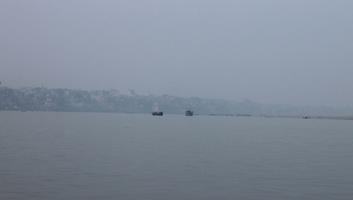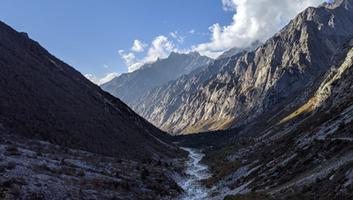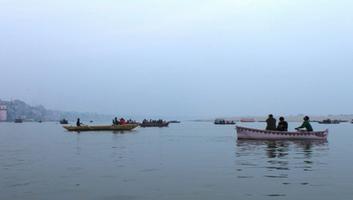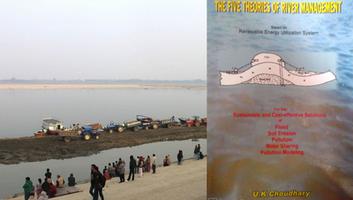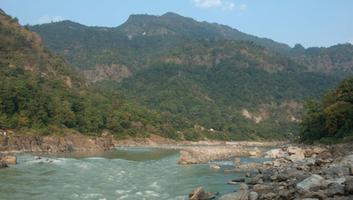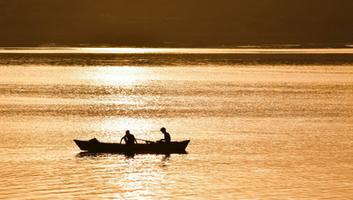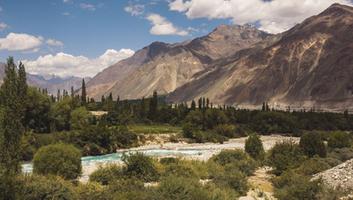Ganga nadi - Do you Know your Ganga?
- By
- VK Joshi
- August-13-2018
For most of us the Ganga is merely a conduit of water. Is that true? In the heart of heart we do revere the River, but remain helpless spectators of the rape of the holy Ganga. The northern plains of India are a gift from the Ganga, Indus and their tributaries. Ganga plains are the largest flood plains in the world. Much of the problems of Ganga are due to ignorance/callousness of the occupants of these plains.
Ganga was earlier supposed to be a self-cleansing river. This was true to a
great extent till about four decades ago. The population and industrial
pressure were much less on the Ganga and its tributaries in the plains. With a
boom of both, the Ganga is virtually clogged. It is time to know what is added
by the nature to the flow of Ganga and how? An answer to this question may
enlighten the planners and developers of the states like U.P. and Bihar, to
save the river from a further doom.
Ganga is partially fed by the snowmelt from not only Gangotri but several other
glaciers in Uttarakhand and largely by its major tributaries and subsurface
aquifers in the plains. South West monsoon is a major controller of Ganga’s
discharge. Monitoring stations situated at different places along the course of
Ganga show a variation of discharge by a factor of 10-100 says Prof I.B. Singh
an expert on alluvial processes. An increased discharge affects the carrying
capacity of the river.
A river carries what the nature supplies due to weathering and eroding in the
catchment area of the river. Physical weathering is important in the Himalayan
region but not chemical and as a result dissolved load of the river is
generally low; Total Dissolved Solid (TDS) values increase downstream as
elements are added from groundwater seepage’ says Prof. Singh.
Ganga from its source to the delta traverses a lot of country side. Therefore,
what the river will carry and what not depends a lot upon the geology and
geomorphology of the terrain through which the river and its tributaries pass.
The material which comes in water as Total Dissolved Solids (TDS) has lot of
impact on the quality of water. The concentration of solids at Gaumukh is 15 mg
per liter and it rises to 110 mg per litre at Haridwar. As the Ganga winds its
way through Kanpur the TDS content goes further up to 280-350 mg per liter,
260-1060 at Allahabad. It is noteworthy that the major tributary Yamuna joins
Ganga at Allahabad. Consequently there is a multifold increase of volume of
water and the TDS at Varanasi is reported to be 370 to 490 mg per liter. By the
time Ganga travels further downstream of Patna, more rivers join it and the TDS
goes down to 220 mg per liter at Munger, 195 mg per liter at Bhagalpur and 165
mg per liter at Rajmahal. Ganga-Brahmaputra system transports about 180 million
tons of dissolved solids annually to the Bay of Bengal claims Prof I.B. Singh.
The TDS content of the river is also influenced by seepage from groundwater.
Sad part is that near urban centers metals, pesticides, DDT and endosulfan etc.
residues rise in the water.
Ganga is not a municipal drain-it is a mighty river.
The erosive power of the Ganga can be gauged from the fact that it carries one
of the highest volumes of sediments to the ocean. As per one the estimates the
annual suspended loads of the Ganga and the Brahmaputra in Bangladesh is 520
and 540 million tons a year. The load of suspended sediments carried by the
River goes on increasing downstream. The process starts from erosion and
denudation in the Ganga catchment in the Himalayas and in the plains, during
rains when the discharge of the River increases multifold, the upwelling
currents scour sediments from the bottom and keep on transporting them
downstream. At Farakka near the head of the delta an annual suspended load of
sediment discharge of 728 million tons has been recorded. Of which 320 million
tons is transported down to Hugli and the rest travels down the main river in
to the active delta to join the Brahmaputra. The volume of water rises so much
in the Ganga, that during the monsoon about 90% suspended sediment load moves
in to the delta region which is estimated to be 600X106-2500X106 tons per year.
No wonder Ganga Fan (the ‘fan’ like
spread of sediments deposited by the river in the ocean) is the world’s largest
Fan!
Part of increased sediment load of the River is our own doing. We have hacked
forests in the Himalayas with vengeance. It is common sense that the roots of
the trees hold soil and check it from slipping down. Alas it is not the case
now and consequently the arrival of eroded sediments in the river is enhancing
continually.
The Ganga sediments have seen a lot of human history and pre-history.
Luminescence ages of sediments from the upper interfluves that is northern
reaches of the areas between the Ganga and the Yamuna rivers has been estimated
to be 51000 to 57000 years. The sediments of the active flood plains have given
ages of 200 to 500 years. In short, the sand from the River which is extracted
blatantly to construct comfortable homes for us is even much older than many of
the cities for which it is used.
The Ganga River as it flows today in the plains, is often taken for granted as
if it has been flowing through the same channel and will continue to flow
through for the years to come. Recent satellite imageries have shown that not
in distant past but between 1914 and 1965 the Ganga at Bijnore has shifted its
course by several kilometers. This is a fact which applies to all the rivers of
the alluvial plains. Since ancient times these mighty rivers have been changing
their course, carving new valleys through their own deposit of sediments, at
times leaving the settlements on the banks stranded and at time submerging the
existing settlement.
The present day Ganga River valley was probably formed during a humid climate
phase around 25000 to 35000 years ago. Since it was a wet climate all around,
the river was carrying more water and the sediments it carried were much
coarser. During lull phases, the River left part of the load of coarse
sediments behind. Over a period of time (between 25000 to 15000 years ago) the
River began cutting through its own coarser deposits within the valley. This
was because of other forces like lowering of the base level of the River as it
was eroding faster towards its source and reduced discharge. Once again around
8000 years ago in the early part of the Holocene Period the climate once again
changed to a wetter phase. Consequently, the sediment supply to the River
increased and the sea levels also rose, the river again started depositing the
detritus it carried. Similarly at the delta the process of deposition of
detritus and delta building increased. It has been found that the sediment
discharge of the Ganga-Brahmaputra system during 7-11000 years before present
was twice that deposited in the following 7000 years. Thus delta building was
at its peak at that time.
It was a complex process all over the plains and the delta. But it lead to
formation of huge deposits of coarse sand and gravel, which now lies in the
sub-surface and acts as biggest natural reservoir of groundwater. On the delta
front, since the river deposited lots of material, some raised land surfaces
were formed. These, over a period of time became favorite haunts of human
settlements. On the sea front dense mangroves developed, which acted as an
interface between the ocean and the land. The human encroachment on the land
surfaces available between the channels of the delta resulted in a degradation
of the mangroves, which also happen to be the abode of the Royal Bengal Tiger.
The land on the delta which has been used for settlement can be reclaimed by
the river any time, as it is the River’s domain. A heavy discharge from the
upstream can misbalance the tranquility any time, without any notice.
Ganga is an ancient river, more ancient than the humanity. The human
settlements on the banks of the Ganga have been influenced by the wide expanse
of the River and many a customs and cultures have developed around the River.
Bathing in the Ganga is considered to be a religious act. Every Hindu calls it
Ganga ‘Mayya’ or mother. Alas, out of
700 small and large cities developed on the banks of the Ganga have a huge
population. Nearly 62 cities out of these have a population of more than one
lakh. Proper disposal of municipal and industrial wastes in these settlements
has never been a priority. Consequently the soul cleanser Ganga has been made
unfit for even bathing and the groundwater contamination from the polluted
waters of the River is also widespread. These apart, construction of bunds,
blocking of natural drainage and occupation of local depressions (lakes and
water bodies) have made the life difficult in the settlements along the Ganga.
Whom do we blame for this?
It is time that authorities start learning about the river, understand its
behavior, know its past and then draw plans for further development. It is time
that each member of the society takes a pledge to never to pollute the River
knowingly or unknowingly, directly or indirectly.
C-302, Rohtas Plumeria Homes
Vibhutikhand
Gomtinagar


